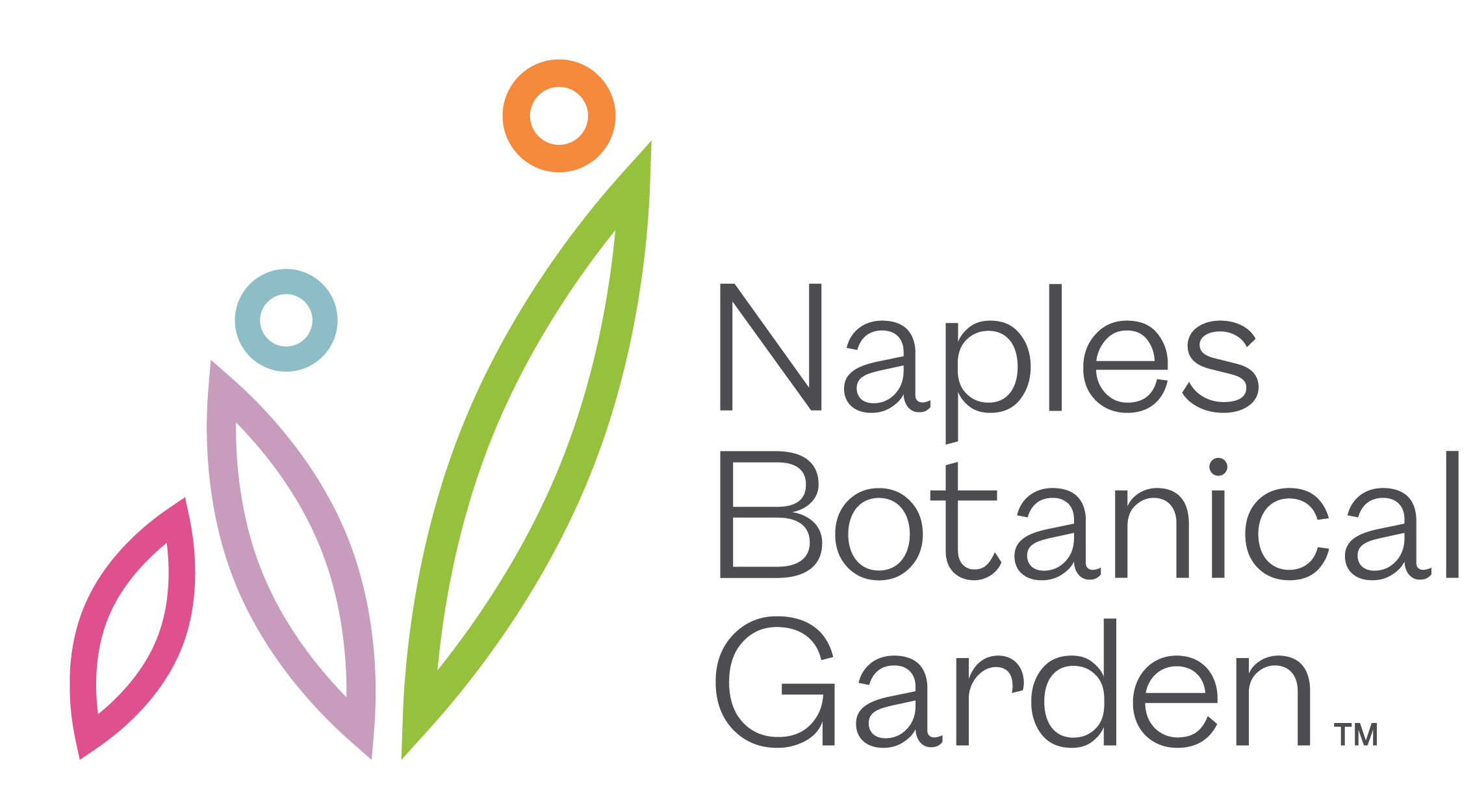Self-Watering Planter
Have you ever wanted to grow herbs and vegetables, but you’re worried about remembering to water them? There is a solution for that: a self-watering planter! Naples Botanical Garden loans EarthBox self-watering planters to schools as part of the Collier Greens program, but you can also make your own small planter at home.
All you need is:
- A plastic bottle, such as a 2-liter soda bottle
- Yarn, twine, or strip of cotton fabric
- Soil
- A seed or seedling
- Water

Step 1: Remove the label, and carefully cut the bottle in half using a box cutter or scissors.

Step 2: For the next step, you have two options:
A: If you have a drill, or a hammer and hole punch or awl, you can make a hole in the cap of the bottle. This will then allow you to thread twine or yarn through the hole. After threading the twine or yarn through the cap, you will then tie a knot on the inside to keep it from sliding out. You should have roughly 6-8 inches of string on either side.
B: If you don’t have a drill, awl, or hole punch or have lost the bottle’s cap, another method is using a piece of scrap cotton fabric. Cut a piece that is at least 12 inches long by about 4 inches wide. At the halfway point, tie a knot and then thread it through so the knot is blocking the top of the bottle.


Step 3: Wet the yarn, twine, or cloth, which is now the wick for your self-watering planter.
Step 4: Fill the top part of the bottle with soil. As you do so, make sure to hold the wick so that it doesn’t get buried at the bottom of the soil. You want the wick to run through the soil so that it can provide moisture to the plant through capillary action. Capillary action is how plants pull water from the soil through their roots into their stems and leaves. This planter will mimic that process by using the wick to pull water from the bottom basin into the soil, where the plant’s roots will be. After filling the top, wet the soil so that the capillary action will work. If the soil ever dries out, the tension will be broken, and the capillary action won’t occur until you re-wet the soil by watering from the top.
Step 5: You can use this planter to start seeds, either those that will later need to be stepped up and planted in a larger container or those that can grow in the space provided, like herbs or small vegetables that will fit in the bottle planter. You can also plant a small seedling or cutting in the container. In either case, you will need to water the plant gently from the top just until the seed germinates or the plant is established.
Step 6: Find a place for your planter. Remember, you will need to fill the reservoir every few days, so put it in a place where you can see it and remember to refill the bottom reservoir.


